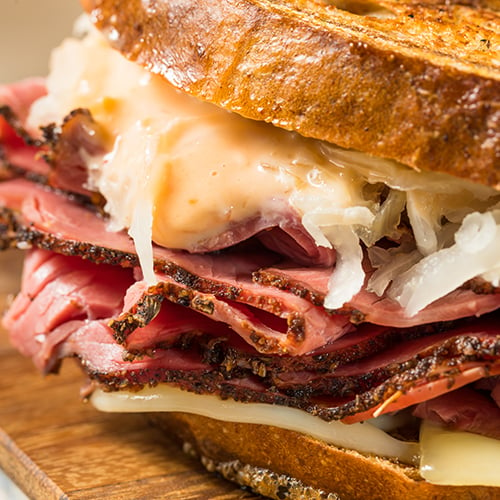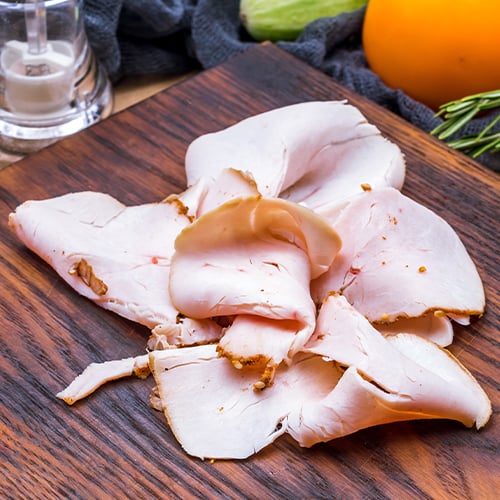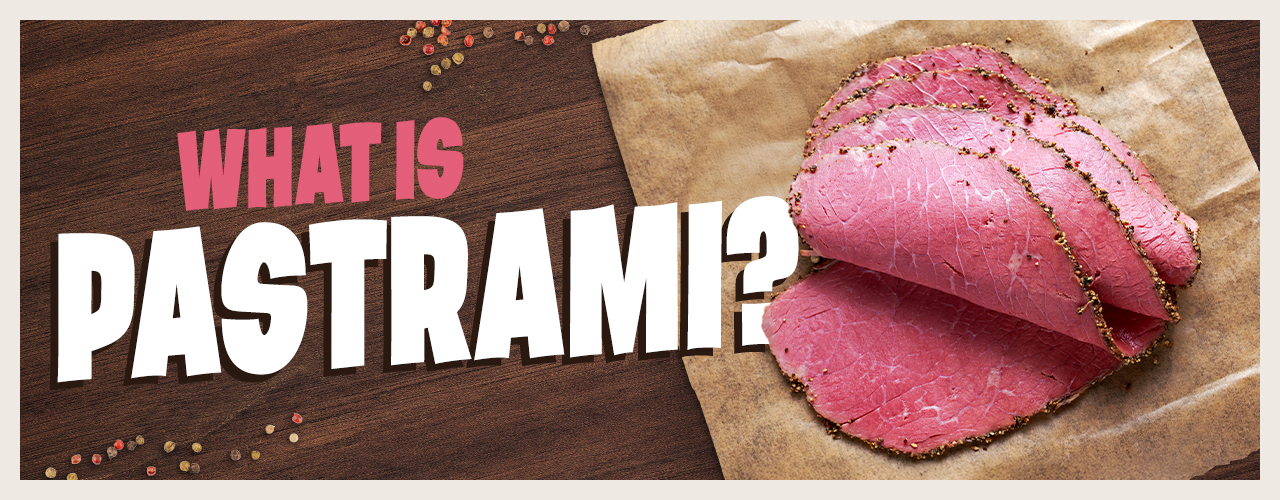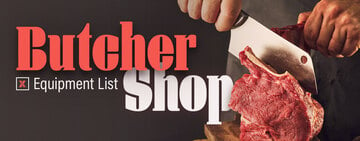Pastrami is a premium, highly seasoned deli staple made from brined, smoked, and steamed beef (traditionally brisket). It is renowned for its bold peppercorn crust, tender texture, and deep, spiced flavor profile. For operators seeking to elevate their menu with a proven customer favorite that commands strong profit margins, mastering pastrami is key. Discover below how this iconic cured meat can become a powerhouse item that drives repeat business and menu innovation.
Shop All Deli MeatWhat Is Pastrami Made Of?

Pastrami is primarily made from beef, transformed through a signature curing and cooking process into the tender, flavorful deli staple we know. Knowing exactly what goes into pastrami is the first step to sourcing wisely, costing accurately, and delivering consistent, high-quality menu items. While specific cuts can vary, understanding the base ingredient and its journey is crucial for commercial success.
Is Pastrami Beef or Pork?
Traditional pastrami is made from beef. Beef brisket is the undisputed gold standard, prized for its rich marbling and connective tissue that break down during extended preparation, creating pastrami's signature tenderness and deep flavor. While some regional variations (like certain Romanian styles) historically used pork, virtually all pastrami served in North American delis and restaurants today is beef-based. Sourcing high-quality, well-trimmed beef brisket is fundamental for foodservice operators aiming for the authentic flavor and texture that customers expect.
Is Pastrami Raw?
Commercially supplied pastrami for foodservice is fully cooked and ready to consume. The combination of the brining/curing process, followed by hot smoking and thorough steaming, ensures the meat is pasteurized and safe for consumption without further cooking. Operators must handle pastrami as a cooked product, following strict food safety protocols for ready-to-eat meats. Reheating before service is for texture and temperature, not for cooking. Always verify the product specification sheet from your supplier to confirm its ready-to-eat status.
How Is Pastrami Made?
The magic of pastrami lies in its unique three-stage preparation:
- Brining (Curing): The beef undergoes an extended immersion in a seasoned brine solution, typically containing water, salt, sugar, curing salt, garlic, and pickling spices. This brine deeply penetrates the meat, seasoning it throughout and beginning the preservation process. Brining time varies significantly based on size and method but is critical for flavor depth and safety.
- Seasoning & Smoking: After brining and thorough rinsing, the meat is coated heavily in a robust spice rub. The classic pastrami crust is defined by coarsely cracked black peppercorns and coriander seeds, often complemented by garlic powder, mustard powder, and paprika. The seasoned meat is then hot-smoked over wood at relatively low temperatures, typically 165 degrees Fahrenheit to 200 degrees Fahrenheit.
- Steaming: The smoked beef is steamed for several hours until it becomes exceptionally tender and reaches a safe internal temperature, usually around 165 degrees Fahrenheit. Steaming is what transforms the smoked brisket into the succulent, sliceable pastrami ready for sandwiches or plates. Purchasing fully cooked, ready-to-slice pastrami is standard, and reheating via gentle steaming before service is essential to maintain optimal texture and moisture.
Pastrami vs Corned Beef
While both are iconic cured beef products, corn beef and pastrami can differ greatly in preparation, flavor, and application. Knowing these key differences ensures you stock the optimal product for each menu item and maximize profitability.
- Base Ingredient: Both traditionally start with beef brisket, though other cuts like round can be used for corned beef. Corned beef relies solely on the brine for flavor and preservation, while pastrami undergoes additional transformative steps after brining.
- Preparation: Corned beef is typically boiled or simmered after brining until tender. After brining, pastrami is coated in a heavy spice rub, smoked, and then steamed to achieve its signature texture.
- Flavor and Aroma: Both have a pronounced salty, savory character from the curing process. Corned beef offers a cleaner, more straightforward beef taste with subtle pickling spice notes, while pastrami delivers a bold, complex profile consisting of deeper spice layers.
- Texture and Appearance: Corned beef has a uniform pink/red interior and a softer, more crumbly texture when sliced. Pastrami boasts a distinctive dark, crusty, and spice-encrusted exterior and a firmer, yet tender and moist interior when sliced.
- Menu Positioning and Cost: Due to its more complex, multi-step production involving smoking and steaming, pastrami typically commands a higher wholesale price per pound than corned beef. This positions it as a premium offering on menus, often justifying a higher sandwich or plate price.
What Goes on a Pastrami Sandwich?

The iconic pastrami sandwich is a menu powerhouse, but its profitability hinges on mastering its core construction and strategic variations. Understanding the main components and optional upgrades allows for menu engineering that balances authentic expectations with food cost control. Here's the breakdown of what defines this classic and how to leverage it for success:
- Sturdy Bread: Rye bread is the traditional, expected type of bread, prized for its tangy flavor and ability to hold juicy fillings without sogginess. Source consistent, pre-sliced loaves for speed and cost control, toasting lightly enhances durability.
- Pastrami: High-quality, fully cooked pastrami is key. Steam it until hot and tender just before service for optimal texture and food safety.
- Cheese: Swiss cheese is the classic pairing, offering mild nuttiness that balances without overpowering. Slice thinly for quick melting under a salamander. Offer alternative cheeses as premium upsells.
- Tangy Mustard: Spicy brown or deli-style mustad is essential, cutting through richness with a sharp tang. Offer gourmet mustards as paid sides for added profit.
- Kosher Dill Pickle: A crisp kosher dill pickle spear served alongside provides crucial acidity and crunch.
- Strategic Add-Ons: Offer items like thinly sliced raw onion, crisp lettuce, caramelized onions, horseradish sauce, or avocado as optional paid extras to cater to diverse tastes and boost upsell potential.
What Cheese Goes with Pastrami?

Choosing the right type of cheese elevates your pastrami sandwich from good to great, impacting flavor balance, customer appeal, and food cost efficiency. While tradition sets a standard, exploring options allows for menu innovation and targeted cost management. The ideal cheese complements pastrami's bold, smoky, and peppery notes, melts well for hot service, and aligns with your operational needs and price point.
- Swiss Cheese: The undisputed classic. Its mild nuttiness perfectly balances the pastrami's intensity without overpowering it. Swiss melts smoothly, is highly cost-effective, and is expected by customers.
- Provolone: A reliable, mild alternative to Swiss. Provolone offers a slightly creamier melt and similar crowd-pleasing appeal at a competitive food cost.
- Gruyere: A premium choice adding rich, complex nutty and slightly sweet notes. This elevates the sandwich but comes at a higher ingredient cost, best for upscale positioning.
- Pepper Jack: Adds a spicy kick that cuts through pastrami's richness. This cheese is ideal for creating bolder "signature" sandwiches targeting heat-loving customers.
- Cheddar: Creates a distinct, hearty "melt" profile differing from traditional sandwiches. Use this cheese deliberately for specific concepts (e.g., pub-style), as its strong flavor competes more directly.
- Mozzarella: Primarily adds texture and melt that offers mild flavor and lets pastrami shine. Mozzarella is useful for budget-conscious builds or specific styles like melts.
Pastrami FAQ
Below, we answer some of the most common questions regarding pastrami:
What Is Turkey Pastrami?

Turkey pastrami is a poultry-based adaptation of the classic deli meat, made by brining, seasoning, smoking, and steaming turkey breast to mimic the flavor profile and texture of traditional beef pastrami. It offers a strategic option to cater to health-conscious customers, diversify protein choices, and appeal to those preferring poultry. Its milder taste and leaner profile allow for versatile menu applications similar to beef pastrami, expanding your deli offerings without major operational changes.
What Part of the Cow Is Pastrami?
The primary source for authentic pastrami is beef brisket, a cut of meat taken from the breast/pectoral meat of the cow, specifically either the fattier point cut or the leaner flat cut. While beef navel plate (from the belly, near short ribs) is a traditional alternative offering richer marbling, brisket remains the dominant choice in commercial kitchens due to its balance of flavor, texture, and consistent yield.
Is Pastrami Processed Meat?
Pastrami is classified as processed meat due to its transformation through curing, smoking, and steaming, methods that extend shelf life and develop its characteristic flavor, texture, and color. This classification is important for operators as it impacts food safety protocols, menu transparency, and awareness of consumer health perceptions. While it offers operational convenience as a fully cooked product, positioning it accurately as a flavorful, preserved deli item aligns with industry standards and informed customer choices.
By mastering the operational nuances and versatile applications of pastrami, you unlock a high-demand item that satisfies flavor expectations. When sourced wisely, prepared correctly, and positioned effectively, pastrami can be transformed into a consistent revenue driver and a signature offering that keeps guests returning.








